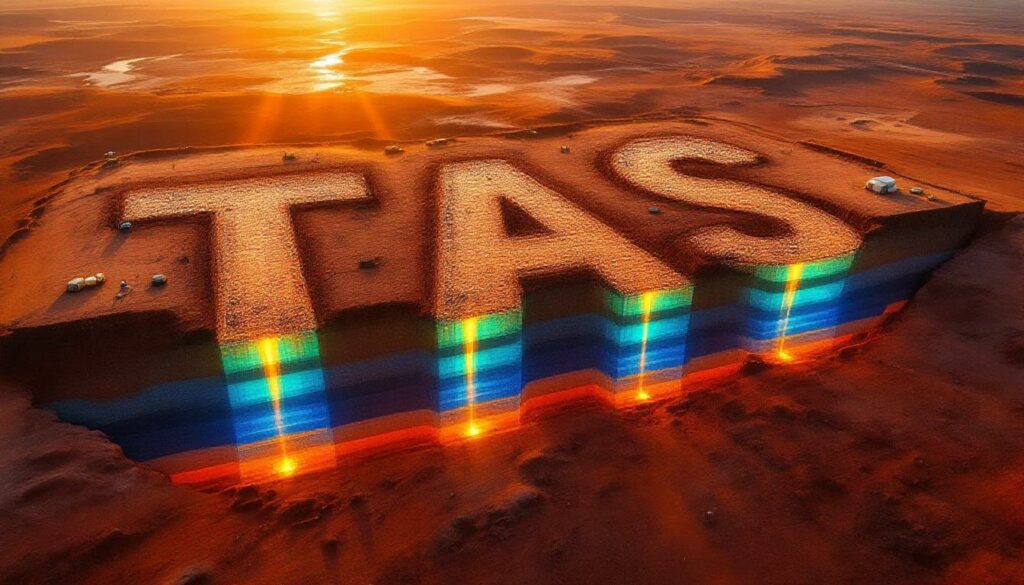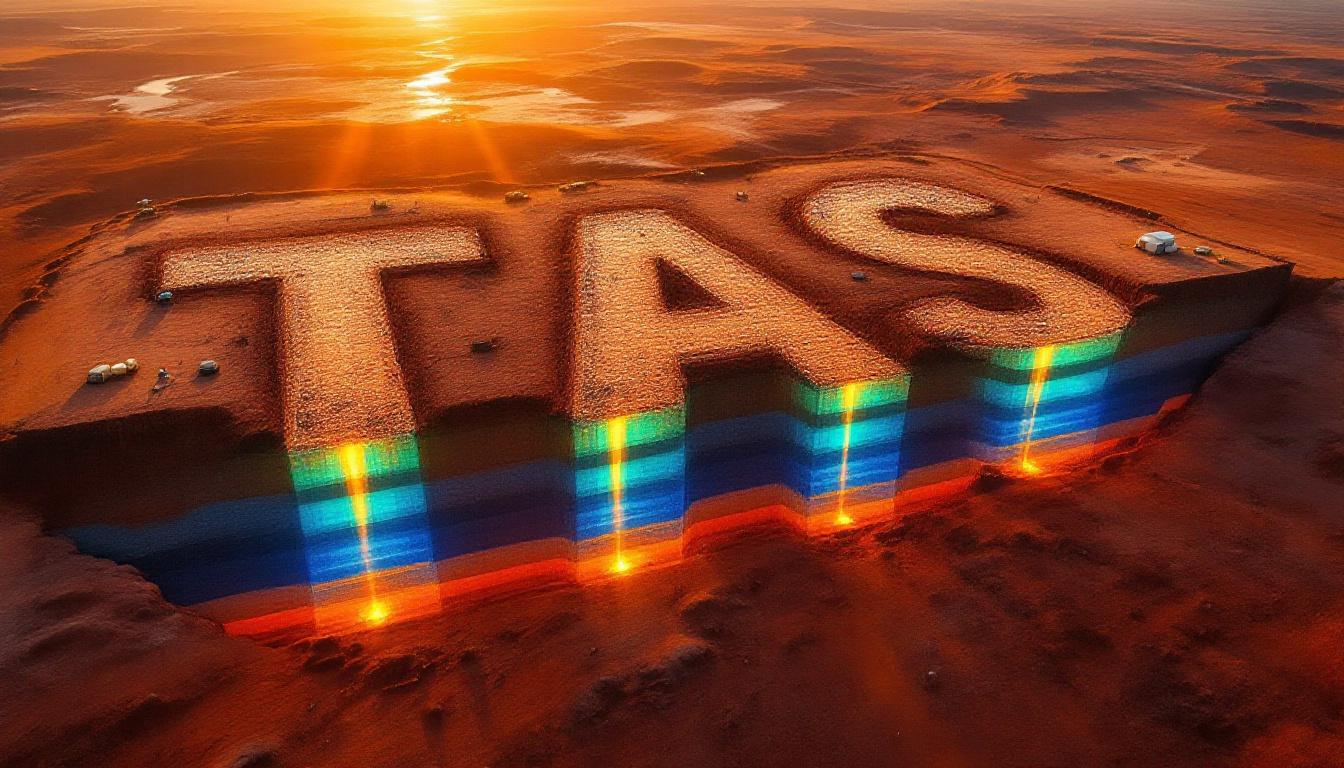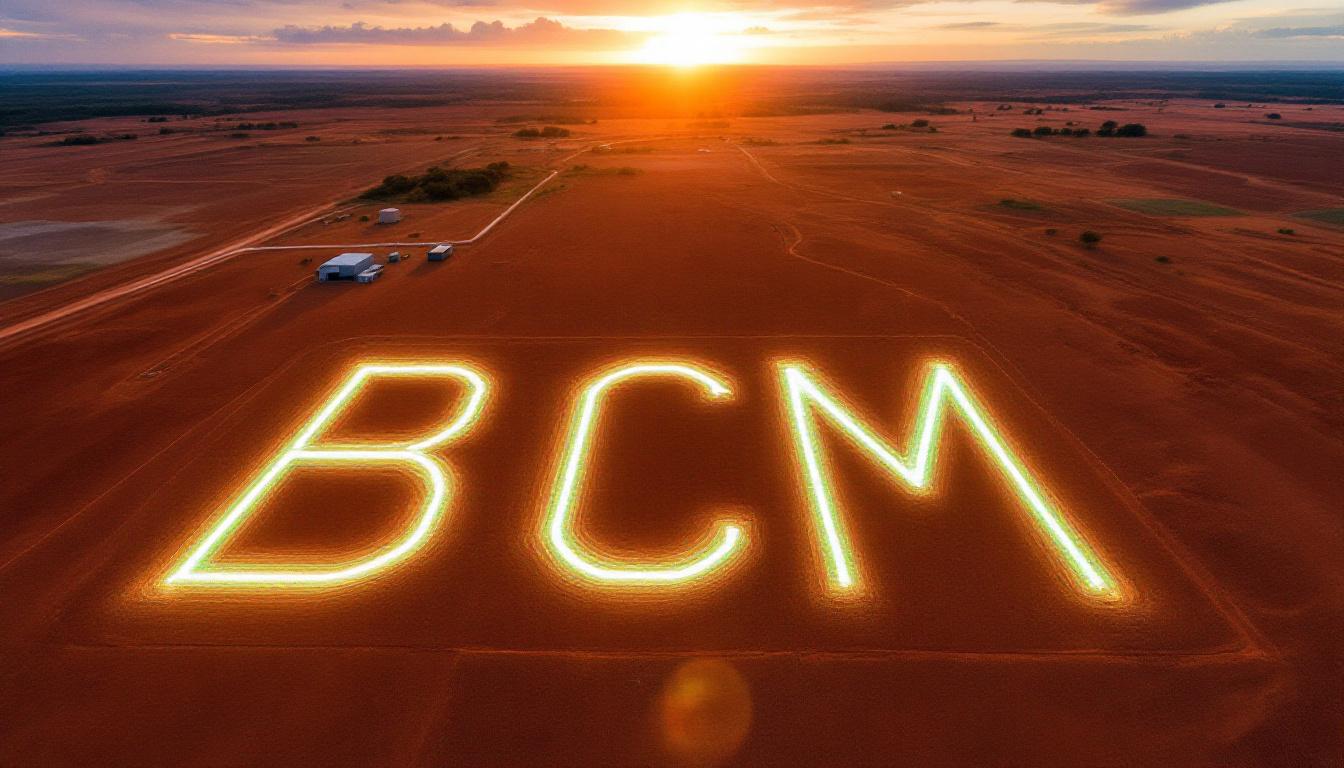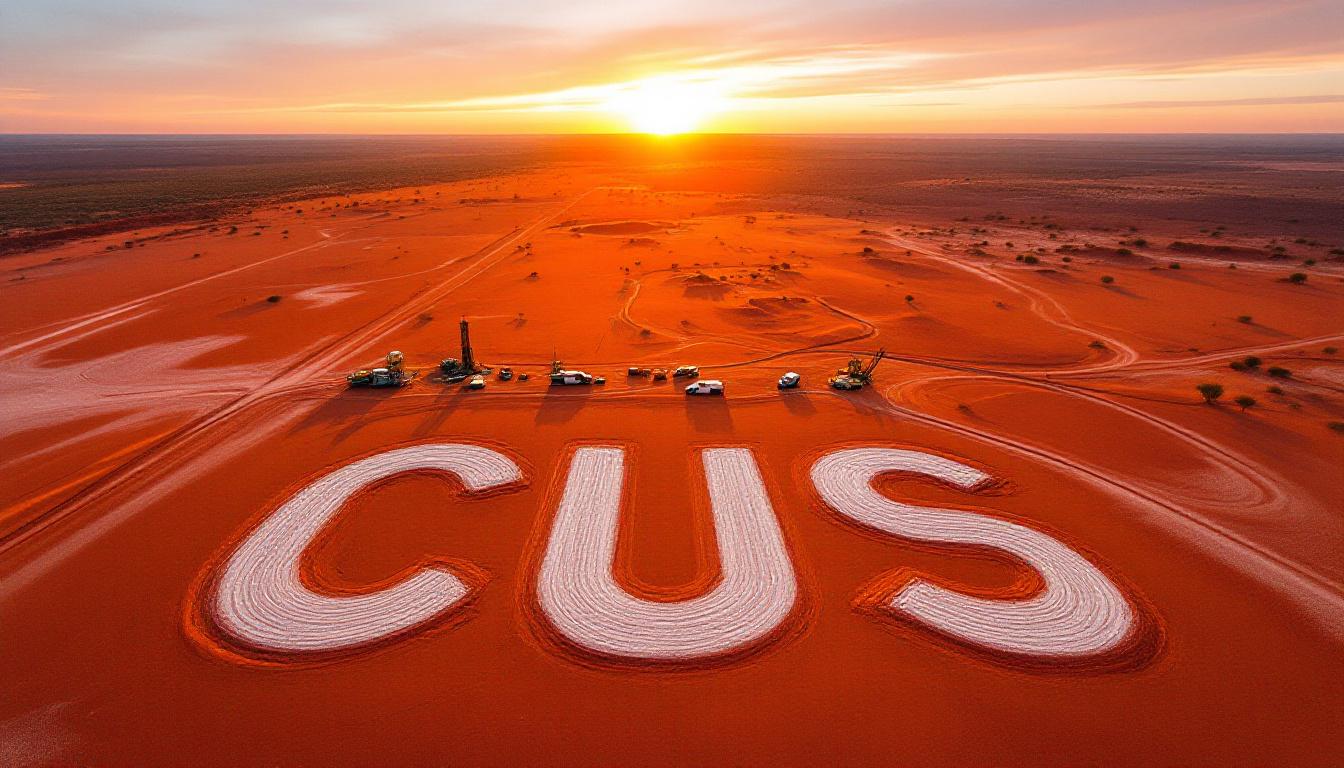Major Discovery Points to Larger Mineralization System
Tasman Resources has identified a significant 7km² conductive zone approximately 3km northeast of their most northerly drill hole (VUD 008) at the Vulcan project. This discovery, made through magneto telluric (MT) and seismic surveys, suggests a potentially much larger mineralized system than previously known.
The conductive zone appears to be fed by a massive 5km deep conductive feeder structure over 1km in width, which could represent the pathway for metal-rich fluids that formed the deposit. Most significantly, the mineralized sequences intersected in previous drilling appear to rise closer to the surface as they extend into this newly identified target area.
This finding is particularly significant when considering that drill hole VUD 008, located 3km from this new target, encountered:
- 179.75m of continuously mineralized basement averaging 0.19% Cu, 0.10g/t Au, 0.02kg/t U₃O₈, and 68g/t Mo
- A higher-grade zone of 21m at 0.63% Cu, 0.28g/t Au, 0.02kg/t U₃O₈, and 107g/t Mo
- First occurrence of bornite (copper-iron sulfide) in the Vulcan system
- Higher copper/sulfur ratios than previous drill holes
Understanding Magneto Telluric (MT) Surveys: The Key to This Discovery
What is MT and Why It Matters to Investors
Magneto Telluric (MT) surveying is a geophysical method that measures naturally occurring electric and magnetic fields at the Earth's surface to determine the electrical resistivity of subsurface materials. Unlike other geophysical methods, MT can detect conductive bodies at depths exceeding 5km, making it especially valuable for identifying deep mineral systems.
For investors, MT surveys represent a cost-effective way to identify potential mineralized systems before spending millions on drilling. The ability to examine several kilometers into the Earth provides a significant advantage in exploration, particularly in areas with thick cover sequences like at Vulcan where the mineralization begins at depths around 900m.
When MT surveys identify strong conductors in Iron Oxide Copper Gold (IOCG) settings, they often indicate zones of increased porosity, sulfide mineralization, or fluid pathways – all critical factors in locating economic mineralization.
Tasman Resources' new Vulcan discovery demonstrates how sophisticated geophysical techniques can significantly expand a project's potential and provide crucial guidance for future exploration efforts.
The Scientific Validation
The significance of this discovery is supported by independent research published in Exploration Geophysics in July 2024. The study concluded that the MT surveys revealed:
- A clear image of the sedimentary cover sequence that correlates with known drill hole data
- Low resistivity (<60 Ω.m) in the haematite core of the deposit, consistent with increased porosity
- An anomalously low-resistivity (<30 Ω.m) zone extending to at least 5km depth northeast of the known mineralization
The researchers proposed that this conductive feature represents "the pathway of metal-rich fluids generated from pro-grade metamorphic reactions associated with the 1590 Ma widespread magmatic event."
Key Research Finding:
"This approach supports the increasingly recognised view that systems hosting ore are complex, integrated, and evolve dynamically during their development… The focus is on mapping the essential pathways used by fluids during the ore formation process, a critical aspect for exploration activities."
Comparative Analysis of Vulcan Project Potential
The latest findings significantly expand the exploration potential at Vulcan. To put this in context:
| Feature | Previous Understanding | New Understanding |
|---|---|---|
| Target Area | Focused around existing drill holes | Additional 7km² conductive zone identified |
| Depth to Mineralization | ~900m in VUD 008 | Potentially shallower in new target area |
| System Scale | Limited to known brecciated haematite area | Connected to a 5km deep feeder structure |
| Mineral Zonation | Limited understanding | Improved vectoring toward higher-grade zones |
| Exploration Potential | Constrained by existing data | Significantly expanded northeast of current drilling |
Future Exploration Pathway
Based on the announcement, Tasman Resources' logical next steps would include:
- Detailed 3D modeling of the conductive zone integrating all available geophysical data
- Target prioritization within the 7km² conductive zone
- Drill testing of the most prospective areas, potentially starting where mineralized sequences appear to approach the surface
- Vectoring toward higher-grade zones using copper/sulfur ratios and presence of bornite as pathfinders
The presence of bornite and higher copper/sulfur ratios in VUD 008 (the hole closest to the new target) is particularly encouraging, as these features often indicate proximity to higher-grade copper mineralization in IOCG systems.
Investment Thesis: Why Vulcan Matters
Tasman Resources' new Vulcan discovery demonstrates characteristics of a potentially significant IOCG system, comparable to other major deposits in the region. The key investment considerations include:
-
Scale Potential: The newly identified 7km² conductive zone substantially increases the potential scale of the mineralized system.
-
Grade Indicators: The presence of bornite and increasing copper/sulfur ratios in VUD 008 (closest to the new target) suggests potential for higher grades in the newly identified zone.
-
Systematic Exploration: Tasman is employing sophisticated geophysical techniques to vector toward the most prospective parts of the system, potentially reducing exploration costs and increasing discovery probability.
-
Depth Advantage: While mineralization begins at approximately 900m depth in previous drilling, the new data suggests the mineralized sequences may rise closer to the surface in the target area, potentially improving project economics.
-
IOCG Deposit Style: IOCG deposits are highly prized for their polymetallic nature (copper, gold, uranium, molybdenum) and can form very large, economically robust mining operations.
Why Investors Should Follow Tasman Resources
The discovery of this substantial conductive zone at Vulcan represents a significant expansion of exploration potential. With the mineralized sequences potentially rising closer to surface as they extend toward this new target area, Tasman has identified what could be a more accessible part of the mineralized system.
The previous intersection in VUD 008 of 179.75m of continuous mineralization including 21m at 0.63% Cu and 0.28g/t Au demonstrates that substantial mineralization exists within this system. The new target area, being closer to what appears to be a major fluid pathway, could potentially host higher grades and greater concentration of mineralization.
For investors interested in early-stage exploration with significant upside potential, Tasman Resources' new Vulcan discovery offers exposure to:
- A potentially major IOCG system with demonstrated mineralization
- A newly identified 7km² target area that remains completely untested
- Sophisticated exploration techniques that improve targeting efficiency
- A project with multi-commodity potential (Cu, Au, U, Mo)
Furthermore, Tasman's approach mirrors successful strategies employed by other companies like S2 Resources in their multi-project drilling campaign across Australia, where systematic exploration has yielded promising results.
Investment Perspective:
Tasman Resources has significantly expanded the exploration potential at Vulcan through sophisticated geophysical techniques. The identification of a major conductive zone connected to a 5km deep feeder structure represents the type of fundamental discovery that can transform a project's prospects. With existing drilling already demonstrating significant mineralization, this new target area could represent the heart of a much larger mineralized system.
Similar to Great Boulder Resources' new gold targets at their Side Well project, the identification of compelling new targets through advanced geophysical methods can significantly enhance a project's prospects. In addition, Lithium Energy's recent gold-copper opportunity in Queensland demonstrates the value investors place on multi-commodity projects in established mining districts.
The consistent presence of mineralization in previous drilling at Vulcan, coupled with the latest geophysical insights, positions Tasman Resources similarly to companies like Matsa Resources who have hit high-grade gold at their projects, where persistent exploration eventually identifies the highest-value portions of mineralized systems.
Want to Discover Australia's Next Major Mineral Find Before the Market?
Discovery Alert's proprietary Discovery IQ model scans ASX announcements in real-time, delivering instant notifications on significant mineral discoveries that could lead to substantial returns. Explore historic discovery examples and their remarkable market performance by visiting our dedicated discoveries page.




